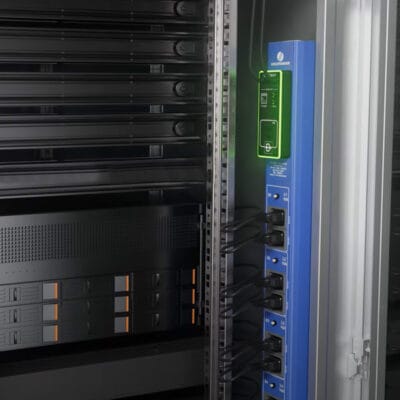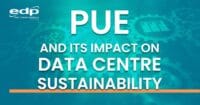Switched PDUs: Intelligent Power Management for Modern Data Centres
 In today’s fast-changing world of Data Centres, managing power well is very important. Switched PDUs (Power Distribution Units), a type of Intelligent PDU, are key to this.
In today’s fast-changing world of Data Centres, managing power well is very important. Switched PDUs (Power Distribution Units), a type of Intelligent PDU, are key to this.
Switched PDUs are different from Basic PDUs and Metered PDUs. Basic PDUs only distribute power. Metered PDUs only monitor power. Switched PDUs let you control power usage in real-time.
This article looks at the main functions of Switched PDUs. It highlights their key differences and unique benefits for improving energy efficiency in Data Centres.
You will see how these PDUs enhance operations and boost the performance of technologies like AI and HPC. You will learn how investing in smart power management solutions can transform your Data Centre into a model of efficiency and reliability. Join us as we uncover the pivotal role Switched PDUs play in shaping the future of data management and energy conservation.
What are Switched PDUs?
At their core, Power Distribution Units (PDUs) distribute electrical power to multiple devices within a rack, ensuring that all your critical equipment receives the necessary power. However, Switched PDUs go far beyond this basic function. Unlike basic PDUs, which simply provide power outlets, and even Metered PDUs, which only offer power consumption monitoring, Switched PDUs deliver control over individual outlets.
You can remotely switch outlets on or off, reboot equipment unresponsive to other methods, and manage power distribution with unprecedented precision, all from a remote location. This capability significantly enhances uptime, efficiency, and overall Data Centre management.
Here is a breakdown of the key differences:
- Basic PDUs: Basic PDUs are the simplest form of PDUs, in simple terms power strips optimised for rack mounting. They provide multiple outlets from a single power source but offer no monitoring or control capabilities. They suit environments where basic power distribution suffices, and remote management is unnecessary.
- Metered PDUs: These PDUs enable you to monitor power consumption at the PDU level, offering insights into overall energy usage, voltage, current, and other key electrical parameters. This feature allows you to identify potential overloads, optimise power allocation, and improve energy efficiency. However, they do not allow control over individual outlets, limiting their proactive management capabilities.
- Switched PDUs: Enhancing the capabilities of Metered PDUs, Switched PDUs incorporate the crucial element of remote control. Operators can remotely switch outlets on or off via a network connection (e.g., Ethernet, SNMP, web interface), enabling a range of advanced power management strategies. Remote switching facilitates tasks such as rebooting servers, powering down unused equipment to conserve energy, and controlling access to specific devices for security purposes.
The ability to remotely control power outlets truly distinguishes Switched PDUs, making them an invaluable asset for modern Data Centres. They provide the flexibility and control that Data Centres need to respond quickly to issues, optimise power usage, and ensure the continuous operation of critical infrastructure.
More control means less downtime, better energy efficiency, and significant cost savings. This makes Switched PDUs a key part of any company that wants to create a strong and efficient Data Centre.
The Value Switched PDUs Provide to Data Centres
Switched Power Distribution Units (PDUs) deliver substantial value to modern Data Centres by leveraging their distinctive capabilities across these critical areas:
- Remote Management: Switched PDUs empower administrators with the ability to remotely manage power to individual devices connected to the PDU. This feature proves indispensable, especially for organisations with geographically dispersed Data Centres or limited on-site personnel. Technicians perform remote reboots of unresponsive servers, power cycle failing equipment, and diagnose issues, eliminating the costly need for physical site visits. This remote accessibility enhances efficiency and reduces operational overhead.
- Improved Uptime: Facilitating rapid remote rebooting and power cycling, administrators ensure robust uptime for critical systems with Switched PDUs. When servers or network devices become unresponsive—a frequent occurrence in complex IT environments—a quick remote power cycle often swiftly resolves the issue. This preventive measure mitigates full outages, minimising disruptions to vital services while preserving business continuity and safeguarding revenue.
- Enhanced Security: By remotely powering off unused equipment, administrators enhance Data Centre security, thus reducing the risk of unauthorised access and potential security breaches. This is especially useful for decommissioned servers or during maintenance windows, playing a crucial role in bolstering security protocols and reducing the attack surface. This approach provides an extra defence layer against cyber threats.
- Capacity Planning: Administrators exploit the metering capabilities of Switched PDUs to monitor energy consumption of connected equipment. This critical data aids in capacity planning, enabling efficient resource allocation and prevention of over-provisioning.
- Environmental Monitoring: Administrators leverage environmental sensors included in many Switched PDUs to monitor temperature, humidity, and other environmental factors within the rack. Access to this data furnishes valuable insights into the operating environment, helping prevent equipment failures due to overheating or other environmental concerns.
Improving Energy Efficiency
In today’s Data Centres, energy efficiency has transformed from merely a desirable cost-saving measure into a critical environmental imperative.
The escalating costs of electricity, coupled with growing concerns about carbon emissions and sustainability, demand that organisations take an initiative-taking approach to managing power consumption.
Organisations have embraced Switched Power Distribution Units (PDUs) as a key technology to address these challenges, significantly improving energy efficiency through the following key mechanisms:
- Power Capping: Administrators use Switched PDUs to implement power capping, which limits the maximum power consumption of individual servers. By doing so, they prevent servers from drawing excessive power during peak demand, thus reducing the risk of overloading the power infrastructure and enhancing overall energy efficiency.
- Granular Power Management: Administrators gain the ability to control individual outlets remotely with Switched PDUs, unlike with traditional PDUs. This granular control allows them to manage power consumption throughout the Data Centre with precision. They can optimise power use by turning off unused devices like monitors or external storage. They can also adjust power settings on servers based on their workload. This includes powering down idle servers and using other power-saving methods for specific equipment and applications. This level of control maximises efficiency and minimises wasted energy.
- Data-Driven Optimisation: Data Centre operators use the detailed power consumption data provided by Switched PDUs to identify areas where they can achieve improvements in energy efficiency.
With these methods, organisations harness the capabilities of Switched PDUs, ensuring that today’s Data Centres operate with greater sustainability and lower environmental impact.
Benefits for AI and HPC
The fast growth and rising use of Artificial Intelligence (AI) and High-Performance Computing (HPC) are changing Data Centres. This change puts new demands on their basic infrastructure. Characterised by complex algorithms and massive datasets, these computationally intensive applications require vast amounts of processing power. Consequently, power consumption surges significantly, leading to a corresponding increase in heat generation—both critical challenges for Data Centre operators. It becomes paramount to effectively manage power distribution and consumption to ensure the reliable and efficient operation of AI and HPC systems.
Switched HPC Power Distribution Units (PDUs) provide key benefits and crucial capabilities to address the unique and demanding power requirements presented by AI and HPC workloads:
- High-Density Power Distribution: AI and HPC servers typically feature densely packed components, especially power-hungry processors, and Graphics Processing Units (GPUs) that drive their computational capabilities. This setup necessitates high-density power distribution to effectively support the substantial power demands of each server. Switched PDUs, available in high-density configurations, deliver the necessary power capacity in a compact form factor.
- Precise Power Control: AI and HPC workloads often display high variability, characterised by periods of intense processing followed by relative inactivity. This dynamic nature requires a flexible power management solution. Switched PDUs enable precise power control, allowing administrators to dynamically allocate power to individual servers or groups of servers based on current workload demands. This granular control optimises power usage by matching supply with demand, reducing wasted energy and minimising operational costs.
- Optimised Cooling: Effective cooling is crucial for maintaining the stability and performance of AI and HPC systems, which generate significant heat. Switched PDUs provide detailed, real-time power consumption data, offering valuable insights into the Data Centre’s thermal profile. By analysing this data, administrators can identify hotspots within racks and areas of high-power density. This information guides strategies to optimise cooling, directing efforts where they are most needed. Targeted cooling improves energy efficiency by reducing the need for overall cooling capacity and helps prevent equipment failures due to overheating, thereby minimising downtime, and costly repairs. Integration with Data Centre Infrastructure Management (DCIM) software can enhance cooling optimisation through automated analysis and control.
- Remote Management and Troubleshooting for Enhanced Uptime: The remote management capabilities of Switched PDUs prove invaluable in AI and HPC environments, with servers often housed in remote Data Centres or co-location facilities. Administrators can remotely monitor power consumption, control individual outlets, and perform troubleshooting tasks without on-site personnel.
Features such as remote power cycling, outlet locking, and critical event notifications (e.g., overloads, elevated temperatures) significantly reduce downtime and minimise the impact of hardware failures. Remote rebooting can often resolve issues without a physical visit, saving time and resources. This level of remote access and control is essential for maintaining the uptime and reliability of AI and HPC systems, often critical to business operations.
Conclusion
In conclusion, Switched PDUs offer a pivotal advancement in intelligent power management for modern Data Centres, distinguishing themselves from basic and Metered PDUs with their enhanced control capabilities. By enabling precise power distribution and remote access, these sophisticated PDUs empower Data Centre operators to optimise energy usage, reduce costs, and boost operational efficiency.
With their unique ability to support innovative technologies like Artificial Intelligence and High-Performance Computing, Switched PDUs become essential for creating a more sustainable and responsive infrastructure. By embracing this innovative solution, you not only facilitate better energy management but also position your Data Centre at the forefront of technological advancement. As you consider upgrading your facilities, let the power of Switched PDUs drive your efficiency and innovation.



